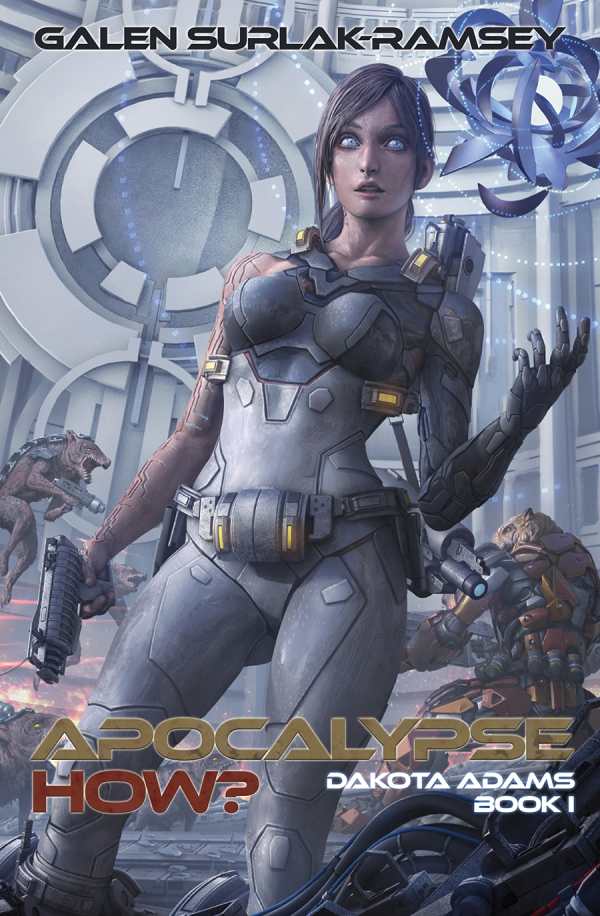Apocalypse How?
Galen Surlak-Ramsey’s comedic Apocalypse How? is the thrilling, clever first entry in a series of space romps.
Hapless treasure hunter Dakota has made it her mission to unlock the secrets of the Progenitors, a race of mythical, godlike beings. But she’s not the only one with that dream, and others who share it do not share her morals. When Dakota stumbles across a Progenitor artifact, she and her alien best friend Tolby use it to evade rival treasure hunters and escape an ancient spaceship before it blows up with them inside.
The text jumps straight into its nonstop action, though the book balances between tense action scenes and quieter moments of exposition. It makes frequent references to science fiction classics, both explicitly and with a Douglas Adams-inspired sense of humor.
Dakota is equal parts ambitious, loyal, and just plain unlucky. She proves tough and brave, willing to explore unknown territory that’s feared by others, but she also shows vulnerability as she tears up in dangerous or upsetting situations. Her attempts at time travel are utilized well. Those whom Dakota meets along the way are distinct, memorable, and—except for the villains—charming.
The book’s primary setting—a futuristic museum where visitors can earn lifetime memberships by becoming exhibits for a few hundred years—is so developed that the book could have revolved around it alone. The glimpses it offers of alien beings and cultures are by turns engrossing and humorous. The book culminates in a rewarding, explosion-filled conclusion that leaves plenty of material for future installments.
Apocalypse How? blends science fiction and humor into a fun, high-stakes adventure quest.
Reviewed by
Eileen Gonzalez
Disclosure: This article is not an endorsement, but a review. The publisher of this book provided free copies of the book to have their book reviewed by a professional reviewer. No fee was paid by the publisher for this review. Foreword Reviews only recommends books that we love. Foreword Magazine, Inc. is disclosing this in accordance with the Federal Trade Commission’s 16 CFR, Part 255.

